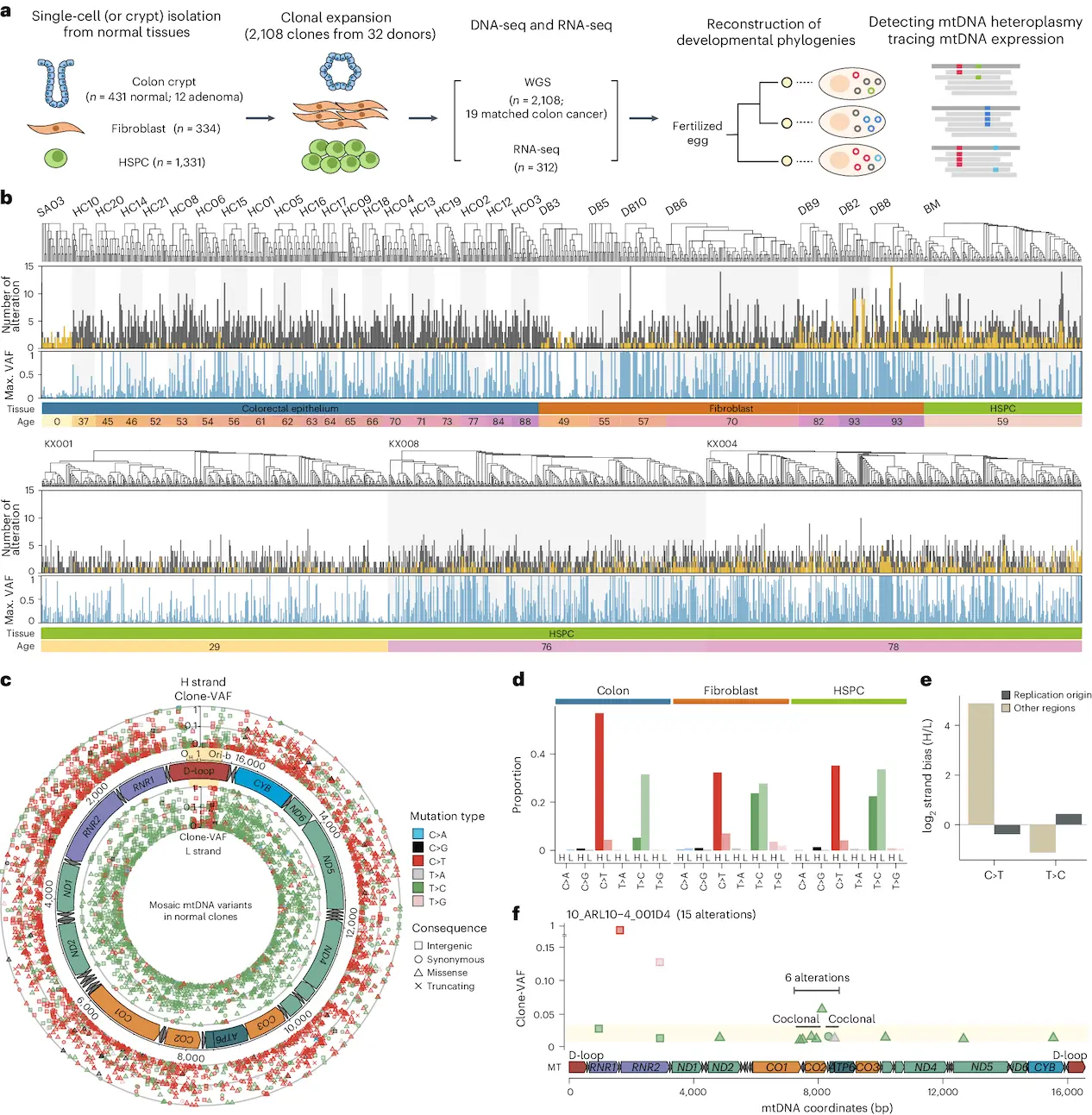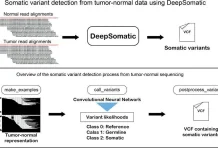Currently, we know that genomic variations are gathered up in somatic cells as one age, but we have a limited understanding of mitochondrial DNA (mtDNA) mosaicism. mtDNA has many effects on various diseases, particularly cancer, and they might have a role in the aging process. Unlike nuclear DNA, which is inherited from both parents, mtDNA is maternally inherited and exists in multiple copies within each cell. This unique feature of mtDNA makes it an important focus for understanding cellular function and disease mechanisms. This study, supported by the Suh Kyungbae Foundation, the National Research Foundation of Korea, and the Leading Researcher Program, talks about the intricacies of mtDNA mutations, analyzing their nature in both healthy and cancerous cells, and investigating how these mutations change with age.
Methods
The study used credible sample data that consisted of 2096 whole-genome sequences (WGS) of clones of nonneoplastic healthy single cells and the corresponding tumor tissue. Next-generation sequencing methods were used along with specialized software to determine the presence of the multiple types of mtDNA mutations at a single moment in a single cell. The specific aims of the study were to investigate the source of these variants, the rate of mtDNA mutation, and the pattern of heteroplasmy with increasing age in different tissues of the body.
Results
Heteroplasmic mtDNA Variants
The gender identification based on a heteroplasmic component of mtDNA showed that the mentioned cells had multiple variations of mtDNA. These variants developed through several processes, like replication of errors, oxidative damage, and other environmental factors. However, most of these heteroplasmic variants were observed at a low level, which means that there are further mutation events inside cells. We need to understand those events, too!
Mutation Rates
Another important change is the enhancement of the mutation rates in cancer cells compared to healthy cells. Cancer cells had about 5 times higher mutation rates because of the increase in their metabolic rate and oxidative damage that occurs in the process of tumorigenesis. Researchers said that a higher mutation rate in cancer cells supports the mtDNA mutations, which in turn helps cancer progression. So, maybe mtDNA mutations could be used as a biomarker for cancer!
Discussion
From this study, it can be seen that researchers tried to explain the nature and behavior of mtDNA mutations in healthy cancer cells. The high rate of mutations observed in cancer cells tells us that mtDNA mutations may be significant for understanding cancer biology and developing new therapeutic strategies.
Implications for cancer research
The detection of high rates of mtDNA mutations in cancer cells can be used as new tools for cancer diagnosis and therapeutic strategies. Targeting mtDNA mutations should enable (researchers) to develop targeted therapies that specifically target cancer cells and reduce damage to healthy tissue. This targeting accuracy can improve treatment effectiveness and reduce some major side effects!
Conclusion
Researchers explain the complexity of mtDNA mutations and how they can affect cancer and aging. A comprehensive analysis of heteroplasmic mtDNAs, their mutation rates, and age-related changes in heteroplasmy levels was conducted using bioinformatics tools and advanced sequencing technology. Their findings demonstrate the potential of mtDNA mutations as cancer and aging-related biomarkers.
Possible Future Directions
It is still necessary to carry out more detailed studies to better understand the specifics of mtDNA mutations in cancer and aging processes. We hope that researchers look into mtDNA mutations that could lead to the development of much better treatments for cancer and age-related diseases!
Article Source: Reference Paper | Codes are available on GitHub.
Disclaimer:
The research discussed in this article was conducted and published by the authors of the referenced paper. CBIRT has no involvement in the research itself. This article is intended solely to raise awareness about recent developments and does not claim authorship or endorsement of the research.
Follow Us!
Learn More:
Neermita Bhattacharya is a consulting Scientific Content Writing Intern at CBIRT. She is pursuing B.Tech in computer science from IIT Jodhpur. She has a niche interest in the amalgamation of biological concepts and computer science and wishes to pursue higher studies in related fields. She has quite a bunch of hobbies- swimming, dancing ballet, playing the violin, guitar, ukulele, singing, drawing and painting, reading novels, playing indie videogames and writing short stories. She is excited to delve deeper into the fields of bioinformatics, genetics and computational biology and possibly help the world through research!
















